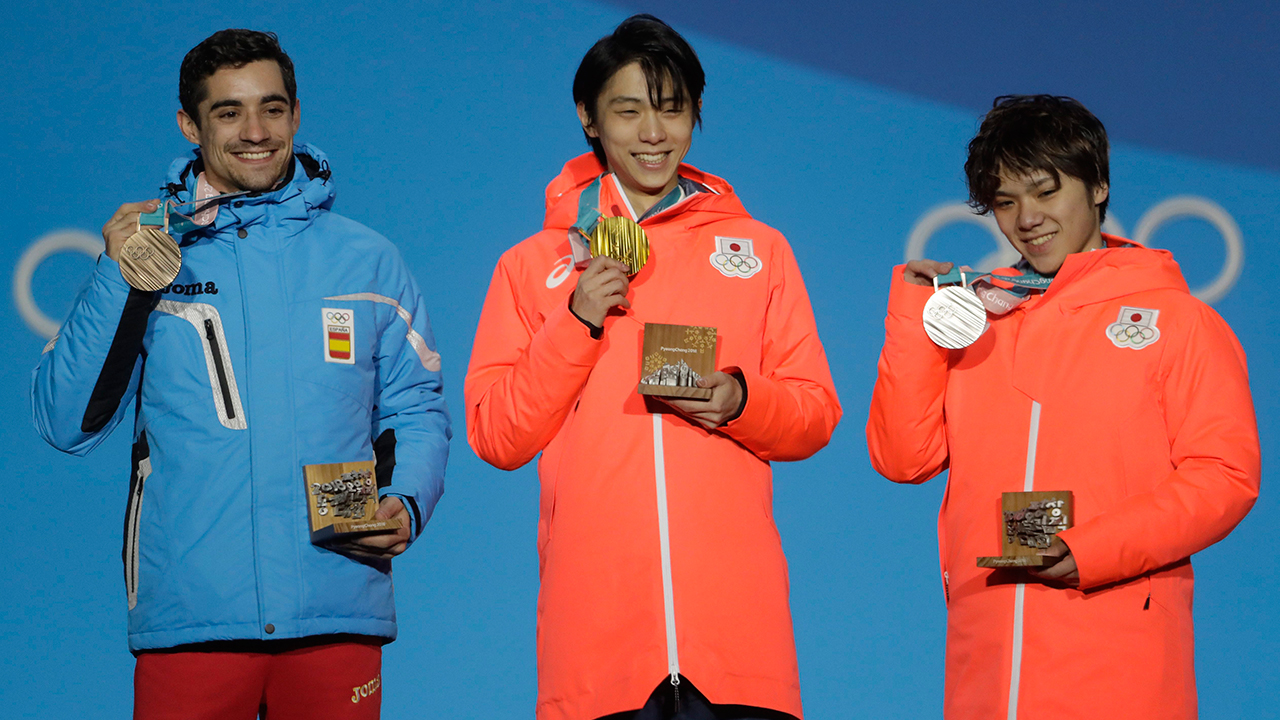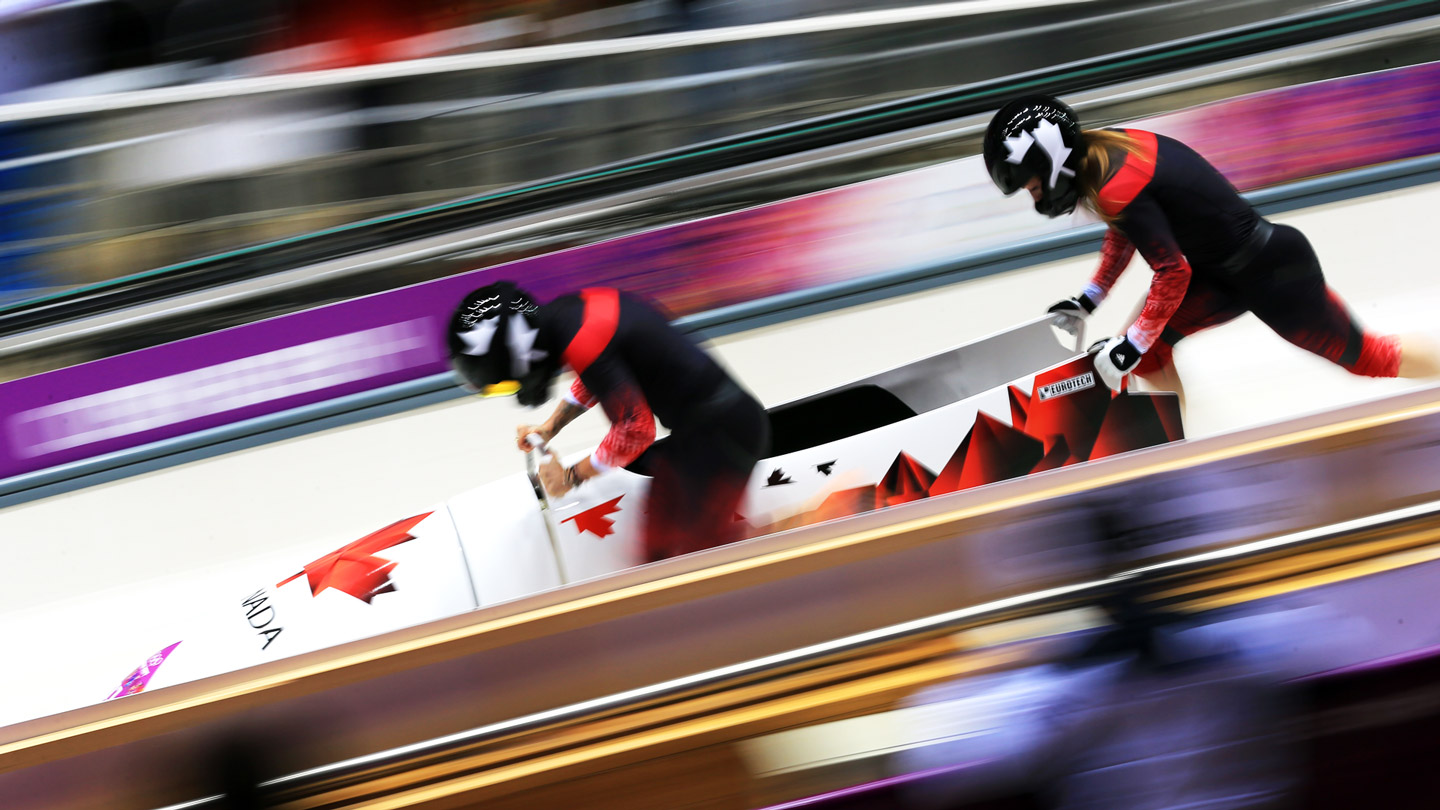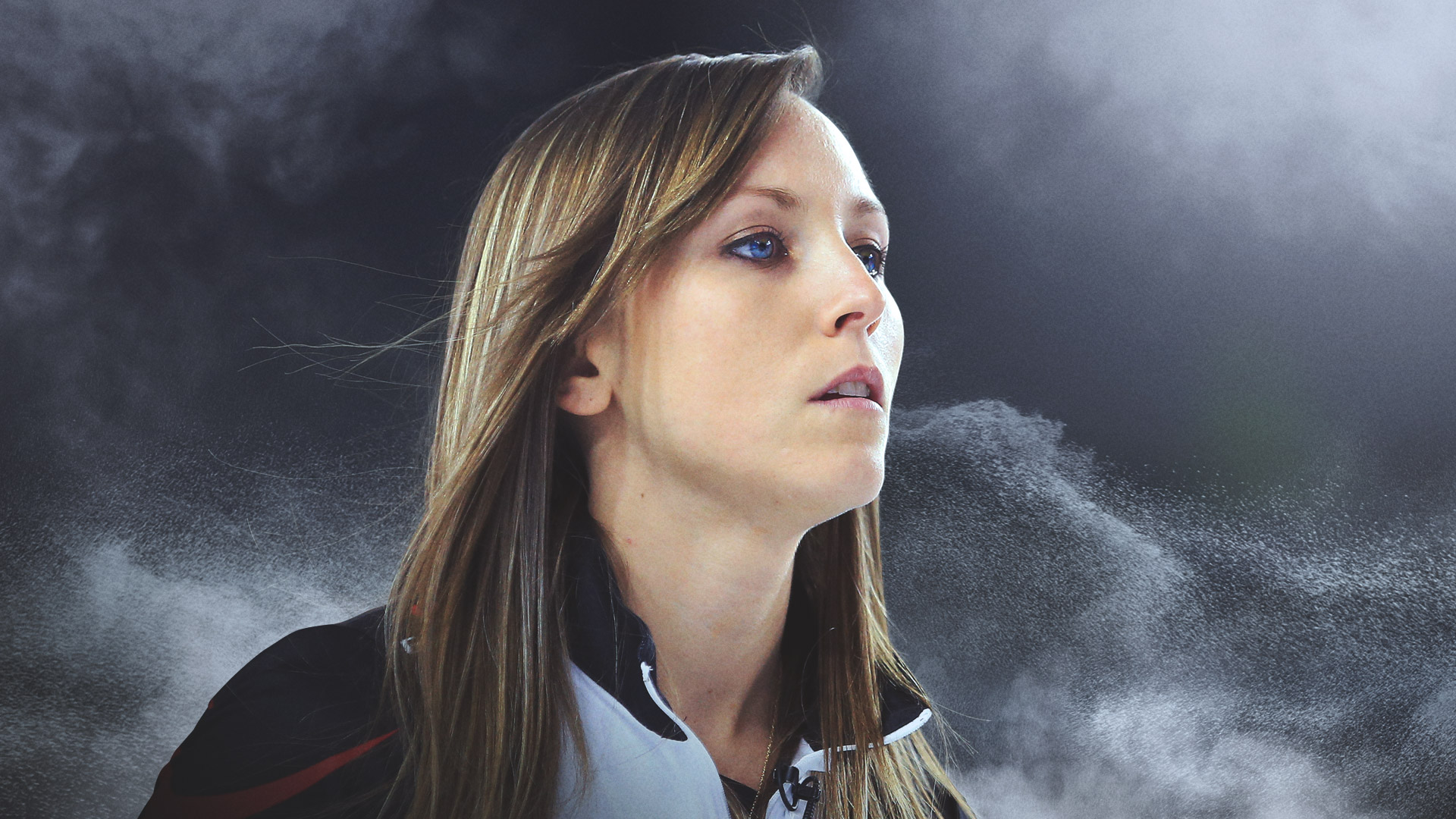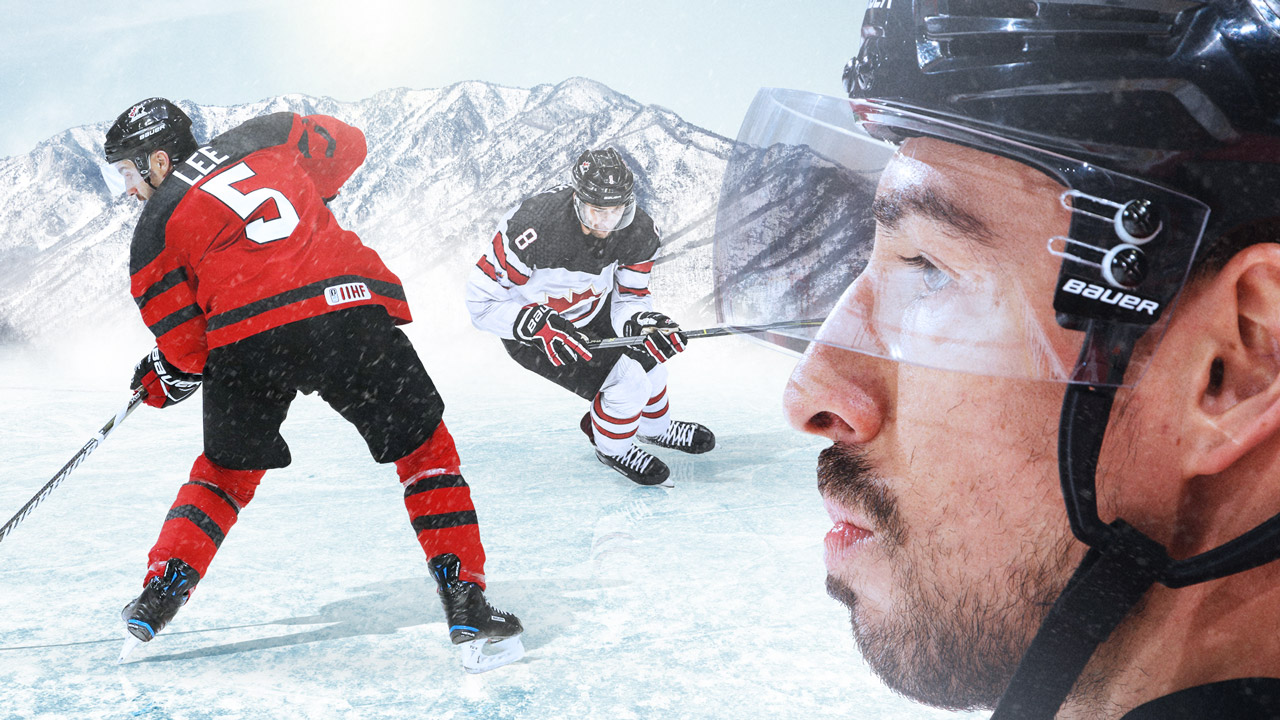The West Edmonton Mall is crowded on this brisk Thursday morning, and in the middle of all the shopping, a world championship silver medallist skates to the tune of “Santa Baby.” Dressed in black, save for brand new white figure skates lined with fake diamonds, Kaetlyn Osmond lands an effortless toe loop, shakes her shoulders and then mouths “hurry down the chimney tonight” along
with Madonna.
Osmond has been skating at the Ice Palace, the rink you’ll find in the biggest mall on this continent, since she was 10. It feels like home, she says, even if conditions aren’t exactly ideal: Sun shining through skylights used to cause melting during summer months. “The ice is flat now,” Osmond says, on account of recent renovations. While skating here the past 12 years, in a mall that not only houses every store imaginable, but an amusement park, an aquarium and a lake, she’s seen plenty of interesting things. One day, Osmond was practicing and spotted a bunch of penguins walking by. Teenagers jump the boards on the regular, and the boldest among them slide across the ice on their stomachs while yelling. High school kids who watch the action during lunch breaks laugh when Osmond falls. “Every fall, I get made fun of,” she says. An audible commotion elsewhere in the mall leads to another thought: “It’s so loud in here. I always forget how loud it is until I come back after a break and think, ‘Wow, how do I do this?’”
If this seems a funny training base for one of the best figure skaters on the planet, that’s because it is. But Osmond — who’s among a slew of Canadian medal threats in her sport, part of one of the deepest teams this country has ever had and the largest contingent of any nation competing with toe pics in South Korea — is not your usual skater, either. As the 22-year-old from tiny Marystown, Nfld., puts it: “My story is a little weird.”
Three years ago, Osmond couldn’t skate without the support of the boards. A month prior, she wanted to quit. The year before that, she’d helped Canada win Olympic silver and didn’t get why everyone made such a big deal about the Winter Games. Twelve years ago, she wasn’t even the best skater in her family. And yet, today, Osmond — along with 20-year-old Torontonian Gabby Daleman, the reigning world bronze medallist and recently crowned national champion — gives Canada a strong shot at a podium finish, which would be Canada’s first on the women’s side at the Olympics since Joannie Rochette’s bronze in 2010. Sitting in an otherwise empty change room between training sessions, her tiny size five feet free of skates for the time being, Osmond says she’s still getting used to the fact she’s entering these Games as a strong medal contender, considering the road she took to get here. “It’s only in the last two years that it’s starting to sink in that I am actually good,” she says. “I know, I know — it’s weird.”
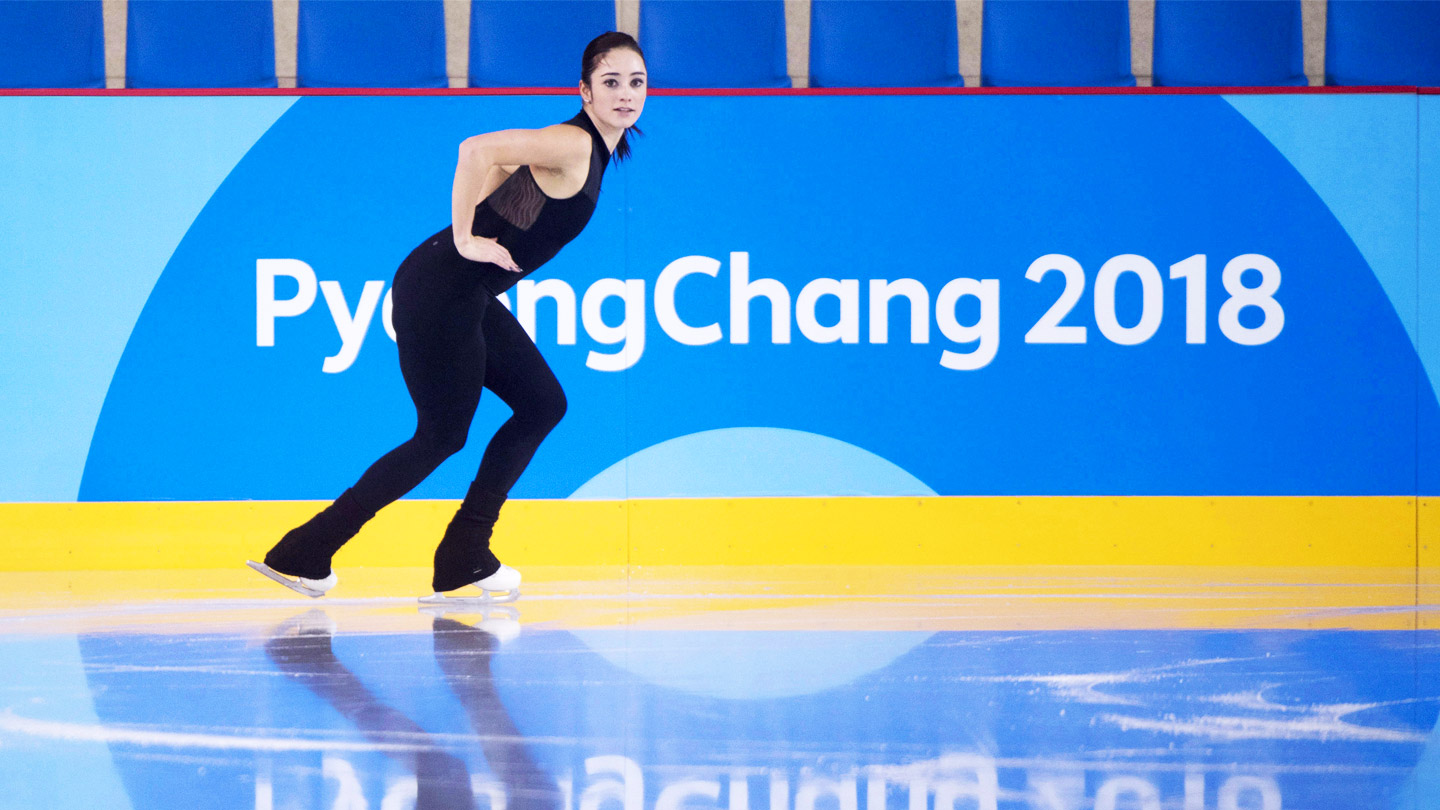
Her nickname was “Bambi”, because the younger of the two Osmond sisters had disproportionally long legs and a penchant for falling. “Kaetlyn was always so carefree on the ice,” says her mother, Jackie, which is one way of putting it. That fearlessness led to a whole lot of bumps and bruises, starting from the age of two. It was Natasha Osmond, a pairs skater, who was “supposed to be the top athlete” in the family, Kaetlyn says. Three years younger, Kaetlyn was “the tagalong,” her mom says, “and anywhere we went we had to obviously take Kaetlyn with us.”
Both Osmond girls skated with the Ice Crystals Figure Skating Club out of Marystown Arena, the only rink in their town of some 5,000 (now named Katelyn Osmond Arena), but the ice was only in from October to April. When Natasha began training in Montreal over the summers, Kaetlyn did too. And because Natasha had a trainer at age 10, Kaetlyn started working with one at seven. That’s around the time she started nailing her doubles with ease while skating upwards of four hours a day, both before and after school. “There was nothing else to do,” she explains. “Small town.”
The family moved to Montreal full-time in 2003 when Kaetlyn was eight at the request of the older Osmond, who wanted to skate year-round and increase her chances of finding a partner. While Natasha was training, Kaetlyn would get a section of the ice to herself to make up her own routines and “keep busy,” Jackie says. There were plenty of elite skaters based in Montreal back then, including Rochette. “It was cool to see people trying triples, because I hadn’t seen that when I was living in Newfoundland,” Osmond says, with no trace of an accent from Canada’s Eastern-most province. “It was a rare commodity when you could do the double axel. Small town: Hard to get triples.”
In Montreal, Kaetlyn began skating six hours a day. She also won her first national title at the juvenile level, which came as a surprise to many. “People looked at me like: ‘How did you do that?’” Osmond says. “I was such a goofy kid that when I won things people were like, ‘Oh, when did that happen?’” Count her parents among that group. Says Jackie, with a laugh: “That’s when my husband and I said, ‘Ho, we’ve got two elite skaters here.’”
Still, when both Osmond girls qualified for the Canada Games that year in Whitehorse, Jeff and Jackie decided they should go watch their kids because, as Jackie says, “We figured it’s probably as close to the Olympics as they’d ever get.”
When Osmond was 10, work in the oil industry brought the family to Edmonton. The girls were in need of a coach, and found one in B.C.-born Ravi Walia, who’d won bronze at the 1995 Canadian championships. The girls became his priority, and Walia says he realized Kaetlyn was a special talent when he took her to Vancouver for a competition, just the second they’d attended together. Osmond was the final skater of the day, and she stood by the door waiting while judges scored the previous competitor. With at least a minute to go before she could step onto the ice, Osmond said to Walia: “When are they gonna call my name? I can’t wait to get out there!” The coach had watched all the other young skaters take deep breaths and battle nerves. Here Osmond was, jumping up and down with excitement. “That’s when I realized, this girl is born to perform and born to compete,” he says. “She was a star in the making.” When finally she heard her name, Osmond skated out to centre ice, then nailed her program and finished first. “That’s something you can’t teach,” Walia says.
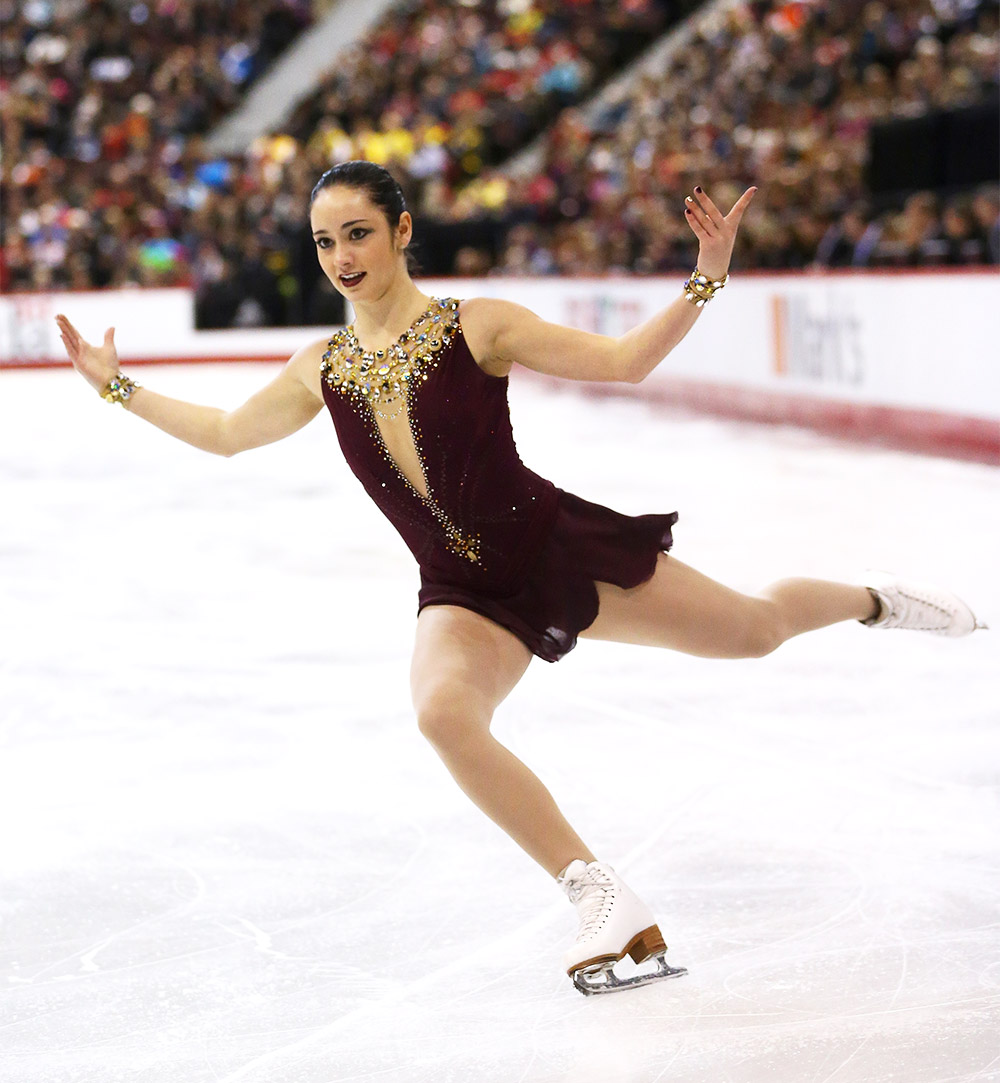
Natasha had trouble finding a partner and eventually quit at age 14, but Kaetlyn continued to show great potential. By the time she was 15, Walia figured Osmond could be among the best in the world. He encouraged her to skate at the senior level a year early to build up to a run at the 2013 world championship team, then a year away, and the 2014 Olympic team. “It was the first time she ever heard me say something that bold,” Walia says. “I could see a change in her. She got very motivated.”
In her first-ever nationals at the senior level, Osmond won a bronze medal. The season after that, she won her first senior national title and made that 2013 world championship team, finishing eighth. She repeated as national champion the following year and in the process qualified to compete at her first Olympic Games, at 18. “I didn’t know what to expect,” she says of the Games. “I’d never watched the Olympics before.” Yes, she’s serious. Jackie says sports were always on at their home, but Osmond says she could never sit still long enough to watch.
Osmond headed to Sochi excited about the opportunity ahead, having heard from teammates like gold medallists Tessa Virtue and Scott Moir about the hype and the excitement and the energy. But she got to Sochi three Februaries ago and it seemed just like any other competition, especially since she missed the opening ceremony. “I was almost shocked that it wasn’t bigger,” Osmond says.
She had been skating well in the lead-up to the Games and opened with a strong short program in the team event, but the rest of her Olympic competition didn’t go well, that team silver medal aside. “I skated probably my worst short program all year,” she says of her performance in the individual women’s event. She finished 13th.
It wasn’t until Osmond marched along with Team Canada in the closing ceremony that something clicked. “I realized, that’s what it’s all about. That’s why everyone was freaking out and that’s why they all love it,” she says. “Ever since then, I’ve been feeling the same way. I get the same butterflies talking about the Olympics. And now I want to get back there and experience it so differently.”
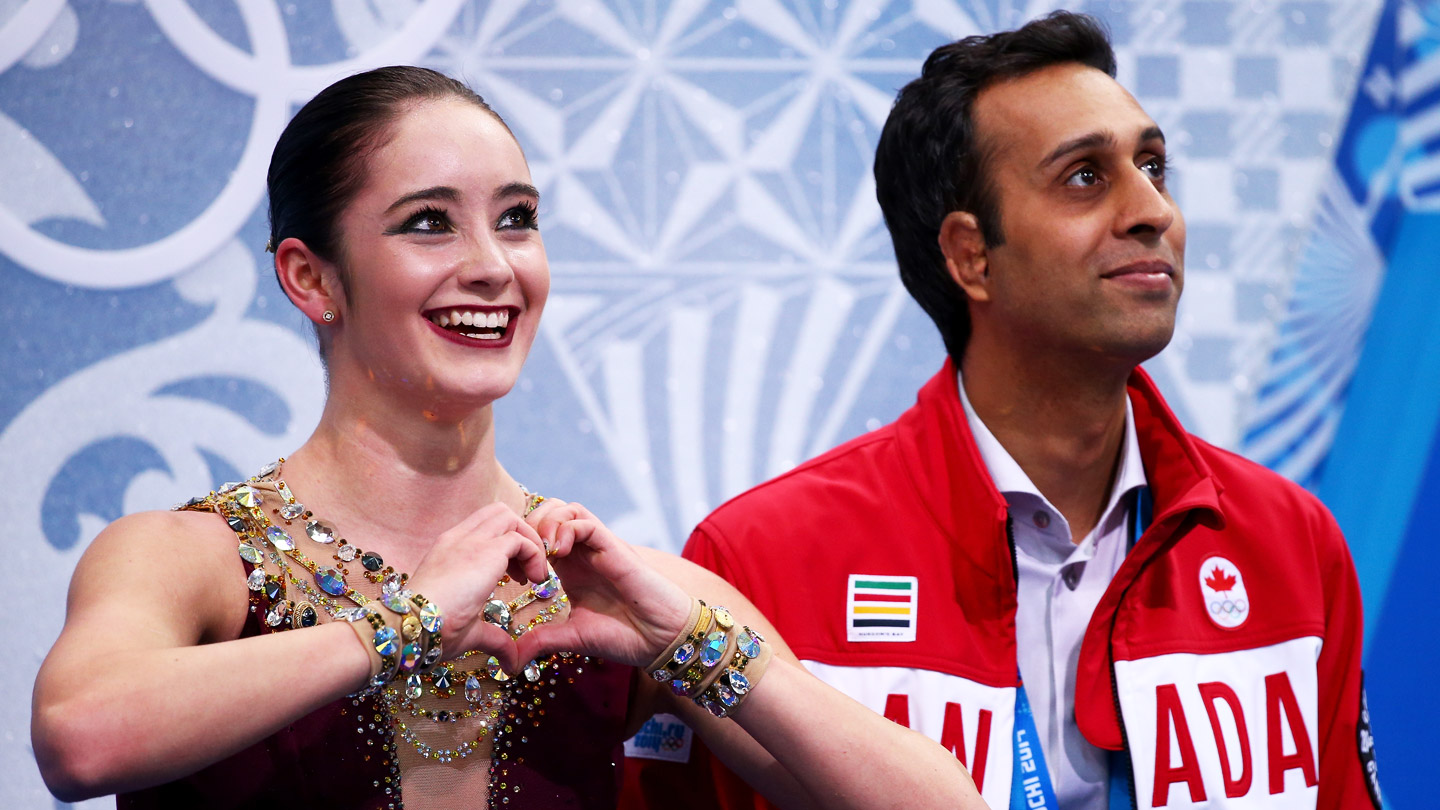
I never want to skate again.
Osmond was lying in a hospital bed in September of 2014 when she said those words to her parents. Days earlier, having only recently recovered from a stress fracture in her foot, she was working on footwork in practice when she swerved to avoid another skater, caught an edge and broke her fibula in two places, just above her ankle. Lying there in hospital, Osmond decided she was tired of injuries. She was done.
Jeff told his daughter they weren’t going to worry about skating: “Your first step is to get better,” he said. Jackie figured Kaetlyn would never skate competitively again, “and there were parts of me that didn’t want her to ever go through that again,” she says now, her voice cracking as she fights back tears.
“If you want to be done, you can be done,” Jackie told her daughter. “[But] skating has always been your life, try on your skates and see how you feel. You don’t want to be scared to skate.” Osmond agreed. Not only did she want to feel comfortable on her blades, she was also terrified how the people around her would feel if she quit, especially Walia.
The coach could sense Osmond was headed in that direction. And so, a couple weeks after the injury, he started to call her regularly, just to chat. They’d talk about anything other than skating, then he’d sneak in queries about how she was feeling and tell her she was going to be just fine. “I did have to be strategic about it,” he says. “I could not let this talent go to waste. She could do something special for herself, for Canada, for her future. She was so close to the top. I told myself I had to find a way to get her back on the ice.” And not just get her back, but convince her to stay.
Osmond had a plate surgically implanted in her right foot due to the spiral fracture in her shin, and her leg was still swollen when she first returned to the Ice Palace, just a few weeks after the break. Ravi booked time before the mall opened so they could have the ice, and the building, to themselves. Osmond gingerly stepped on and immediately grabbed the boards. Jeff was watching, and he called Jackie, who was at work: “It’s like she’s on the ice for the first time ever,” he told his wife. Osmond kept a hold of those boards and shakily pushed herself around the ice with one foot. She turned backwards for a second, but immediately returned to skating forwards. It was too soon. “I had to re-learn how to skate,” she says now, shaking her head. As they moved along the ice Walia talked constantly, trying to keep her mind off skating. All the while, the coach wondered: “Will she be herself again?”
The comeback was slow and measured, because it had to be. It was two weeks before Osmond could even skate with other people present. “I’d feel comfortable for a day, and then I’d feel scared again,” she says. She’d feel panicky each time she attempted a jump. But slowly, she gained strength back in her foot, and her confidence grew. About three months after Osmond first returned, Jackie went to a practice and saw her racing around the ice. “I was like, ‘Oh my god, what happened? This kid is unbelievable,’” Jackie says. Osmond got the plate taken out of her foot, and her comfort level in her skates soared. A couple weeks later, she came home from practice. “Mom, guess what?” she said. “I did an axel.” Jackie’s voice breaks up again at the memory.
Though Osmond was expected to compete four months after the injury, Walia suggested sitting out the entire season and building her strength back up, retooling some of her mechanics. “We started from the beginning,” he explains. “That’s why she’s much better now than she ever was before.”
Still, when she returned at the start of that 2015–16 season, Osmond struggled. She’d nail everything in practice and miss most everything in competition. She was dealing with nerves for the first time in her life. “It felt like I forgot how to compete,” she says. “I realize now that I was competing, but I wasn’t doing it for myself. I was doing it because I was scared to tell my coach that I wanted to be done.”
The turning point was a third-place finish at nationals that cost her a spot on the world championship team. Osmond says that moment “woke me up,” and she decided if she was training for five hours a day, she couldn’t just go through the motions. She began working with a sports psychologist, and she managed to finish that dismal comeback season with a couple of solid skates.
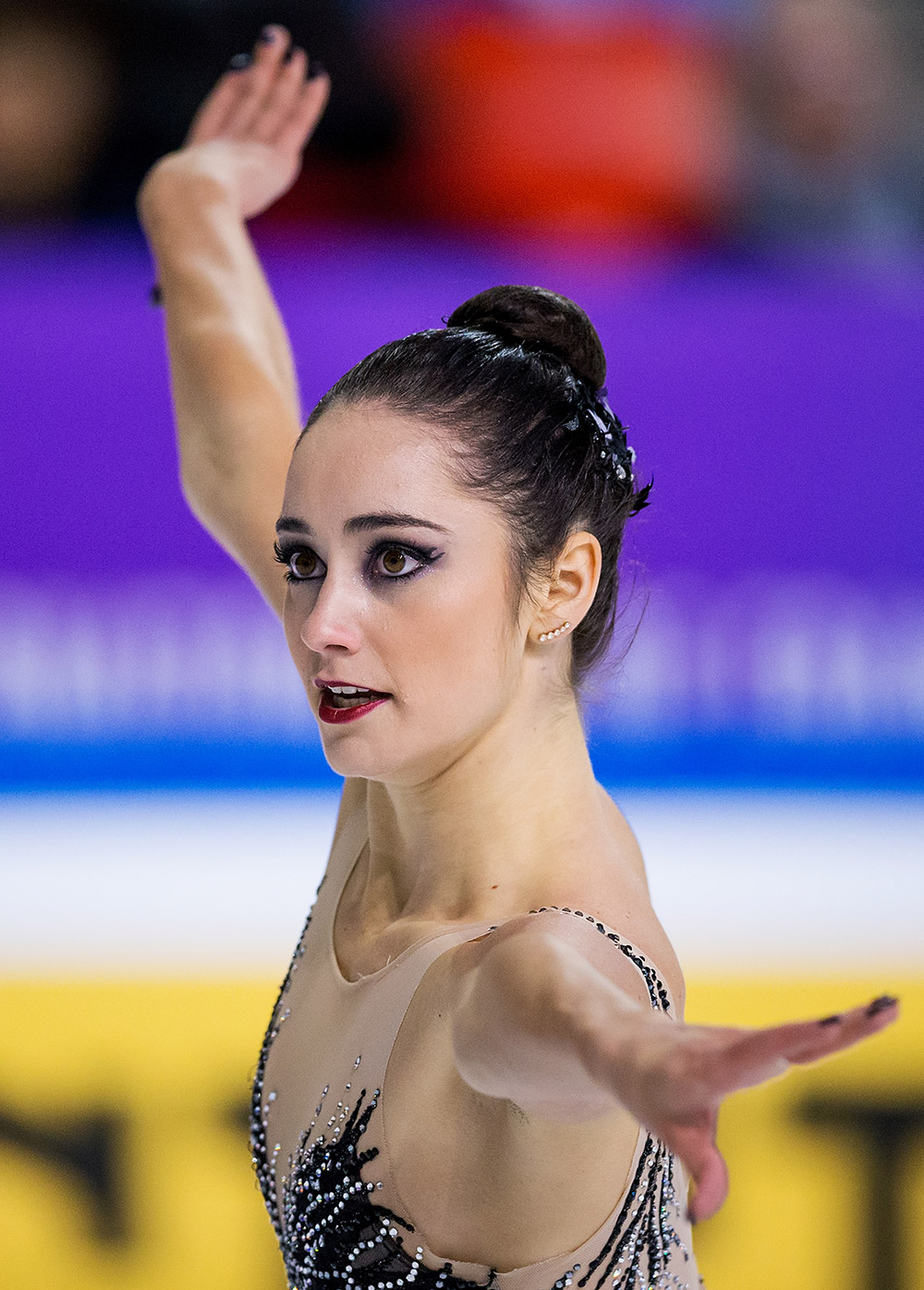
In 2016–17, everything started coming together. Osmond got back to staring down the judges while she skates, which is one of her favourite things to do. In practice, her dark eyes fix on shoppers as she tries to draw them in. “I felt the joy in being in competition again, the joy in skating again,” she says. And after ranking among the top five in the world all of last season, she won bronze in the Grand Prix final and broke out with a silver medal at the 2017 world championships. With Daleman’s bronze, it marked an historic occasion: Never before had two Canadian women shared the podium at a figure skating world championship. It stands as the highlight of Osmond’s career. “It wasn’t the medal that I was proud of,” she explains. “It was the fact that I finally skated the way I wanted to in front of a crowd. I felt amazing.” And perhaps most valuable of all, it convinced Osmond, finally, that she belongs among the world’s elite.
For months now, she has been crossing off the days on a calendar in the lead-up to the Olympics. Osmond isn’t usually one to set expectations, but an individual medal is the goal, and it’s within reach. “It feels like a celebration every time I get to go to a competition, and especially this one,” she says. “That’s what all the work is for.”
But right now, she has to get back on the ice here at West Edmonton Mall for a rehearsal, along with all the members of the Ice Palace Figure Skating Club, many of whom are knee-high. They’re gearing up for a big exhibition show in a couple of days, and the posters are up around the mall, featuring Osmond.
Walia is on the ice, and he’s trying to get the attention of more than 50 skaters who range in age roughly from five-year-olds to 20-somethings. He repeats his instructions and gestures with his arms, doing his best to coral the children. “Are you ready?” Walia asks. “Are you guys smiling? Are you happy? Don’t forget to wave!”
As they skate around the ice, half going one direction and half the other, most of the skaters are waving as per instruction, but one of the biggest kids here — the one in the black Canada jacket, with the big grin — is high-fiving her teammates instead. When Osmond stops, she dances in place, which is not part of the show.
Rehearsal ends and the holiday music stops. As Osmond skates off the ice, Macklemore’s “Glorious” plays on the arena speakers. Osmond mouths along: “I feel glorious, glorious. Got a chance to start again.” She sits down and takes off her skates while she laughs and chats with a teammate. It’s back to work again tomorrow.

